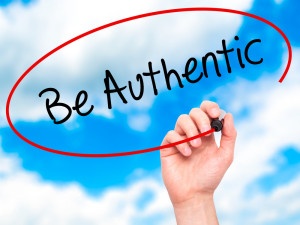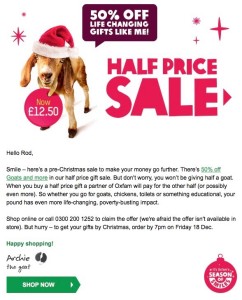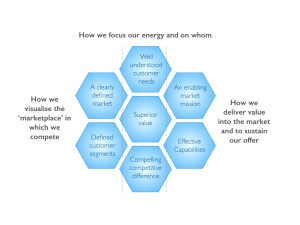 If you put their policies on one side for a moment, what do you think of the leadership of Jeremy Corbyn and David Cameron? Who is the better leader? Maybe you consider the answer to be obvious or maybe you think that the question gets to the heart of some of the bigger leadership issues in our society.
If you put their policies on one side for a moment, what do you think of the leadership of Jeremy Corbyn and David Cameron? Who is the better leader? Maybe you consider the answer to be obvious or maybe you think that the question gets to the heart of some of the bigger leadership issues in our society.
Leadership has received lots of attention over the years. The focus has moved from one aspect to another over time. Most recently increasing emphasis has been devoted to the character and personal demeanour of the leader as oppose to their situation, behaviour, style or any one of many other points involved in leading effectively.
This focus has crystallised in the literature into the need for leaders to be ‘authentic’:
“…engaging authentically with the people around you is the first task of genuine leadership.” (Forbes, 2013)
“…we need authentic leaders—people who own their mistakes, acknowledge their faults, and always put the interests of their organizations ahead of self-interests.” (Bill George, 2015)
“…simply put, people will not follow a leader they feel is unauthentic.” (“Creating the Best Workplace on Earth,” Harvard Business Review, May, 2013)
This emphasis seems to chime with the spirit of our times: its lack of trust in institutions and the evident frailties of a social and economic system that has not proved as robust as people thought at the last millennium.
Our current Labour and Conservative Party leaders expose some of the tensions created by the demand for authenticity and perhaps help open a window on what this apparently admirable quality might really mean for leaders.
What authenticity is not …
The dictionary will tell you that authentic means ‘of undisputed origin and not a copy; genuine.’
This might mean quite a number of different things when applied to a person. Not all are congruent with being an effective leader. Instinctively we might reach for variations on transparency, consistency and vulnerability but there are important problems with these as definitions.
Herminia Ibarra, in the HBR* identifies several possible interpretations of ‘authenticity’ and the challenges that these raise:
- Being true to yourself. But exactly what does this mean? Which of our many selves should we be true to? What if we need to change because we are leading a new change or role that has different needs?
- Behaving in line with what you feel inside i.e. being open and transparent. But, if you are completely transparent in your thoughts and feelings, people may easily lose confidence in you and your credibility as an effective leader.
- Sticking to your values. But what if things that we valued are no longer helpful and need to change if we are to lead effectively?
Back to Dave and Jeremy…who is closest to authenticity? Does authenticity really make the foundation for effective leadership? As is often the case in issues such as this, it is not as simple as some would make out. For instance, there is a tension between people being able to identify with a leader and the authority of the leader.
Emotionally I would baulk at being led ‘inauthentically’ but it is not immediately obvious, at least to me, what being authentic means. What therefore must I do -as a leader who is concerned about ‘being authentic’?
What does it really mean to be authentic?
There are elements of the interpretations above which speak into what it means to be an authentic leader but I think Heminia is right to highlight how grasping at any of these definitions could be counterproductive and undermine the influence of the leader.
The core of authenticity is truth.
Something is authentic because it is the genuine article and authenticity can only anchor itself around the truth of something. The authentic leader is therefore someone who leads in truth on a consistent and continual basis and it is this that breeds the kind of followership that they generate.
What do I mean by this?
Many psychologists when discussing authenticity think in terms of other traits – high esteem, operating in congruence with your core self, embracing vulnerability, listening well, seeing and appreciating others. All in themselves are healthy personal attributes but not what I would use to define authentic.
All these might make you feel comfortable but an authentic leader will I am sure sometimes make you feel really uncomfortable and put you under pressure to change your mind or direction.
Why? Because authenticity values truth above all else – both external truth (in the reality of the situation or the ‘brutal facts’, as others have described them) and personal truth (an awareness of and unbiasedness of self that leads to saying what you mean and speaking the truth, not lies or half truths, even about yourself). To be like this effectively requires lots of other characteristics that also make for a good leader, e.g. courage, confidence, an ability to marshall the facts and listen effectively, argue through issues, listen and communicate well – but at its heart it is about truth.
The essential difference is that authentic leaders anchor themselves on truth and judge their effectiveness and fitness in leading people towards this. Many other things are needed as well as authenticity to lead well but against this definition I would agree that it is a foundation for good leadership.
Avoiding the challenges in authentic leadership
This does not free up leaders from all the pitfalls that a desire to be authentic might create. Being authentic still has an important element of “the unimpeded operation of one’s true or core self in daily enterprise”, as Kernis and Goldman called it when they researched authenticity. This brings challenges to be managed:
- Inflexibility of approach. Leaders need to flex their style to match the situation and the needs of the people being lead. Just because something feels odd does not mean it is inauthentic. Being true to yourself is no excuse for mis-leading others
- Not listening and learning from others because you are so sure that you are the exclusive owner of the truth. Your mind should change when the facts warrant it
- Over-exposing your feelings in ways that shake the confidence of others. You might recognise truths in yourself but that doesn’t necessarily mean that they are helpful to share
- Failing to recognise and respect the feelings of others. Truth needs to be served up in love. This mix provides the backbone and encouragement needed to lead well. Truth on its own can be very unattractive
- Running back to your roots because you fear that moving forward might leave behind your core or real identity
- Thinking that authenticity can be a substitute for competence. Both are needed
Conclusion
Back to Jeremy and Dave – chalk and cheese, you might say but then I could not possibly comment and anyway I rather like Feta.
*The authenticity paradox, Harvard Business Review, Jan/Feb 2015
www.4betterchange.uk
 The Economist this week featured an interesting article in its Schumpeter column on the often hidden problems of the emphasis on collaboration throughout business and its impact on productivity, creativity and original thought.
The Economist this week featured an interesting article in its Schumpeter column on the often hidden problems of the emphasis on collaboration throughout business and its impact on productivity, creativity and original thought.



